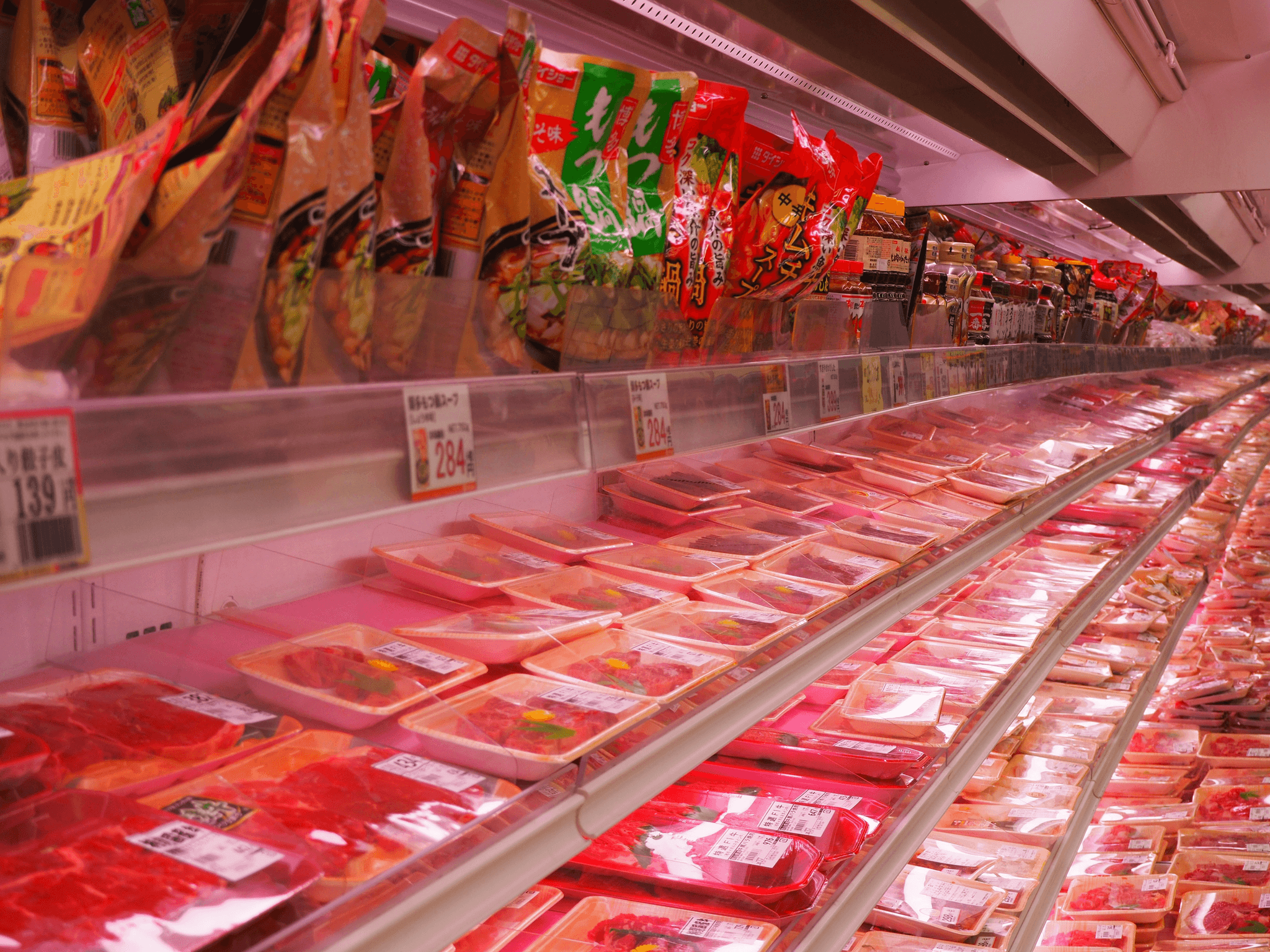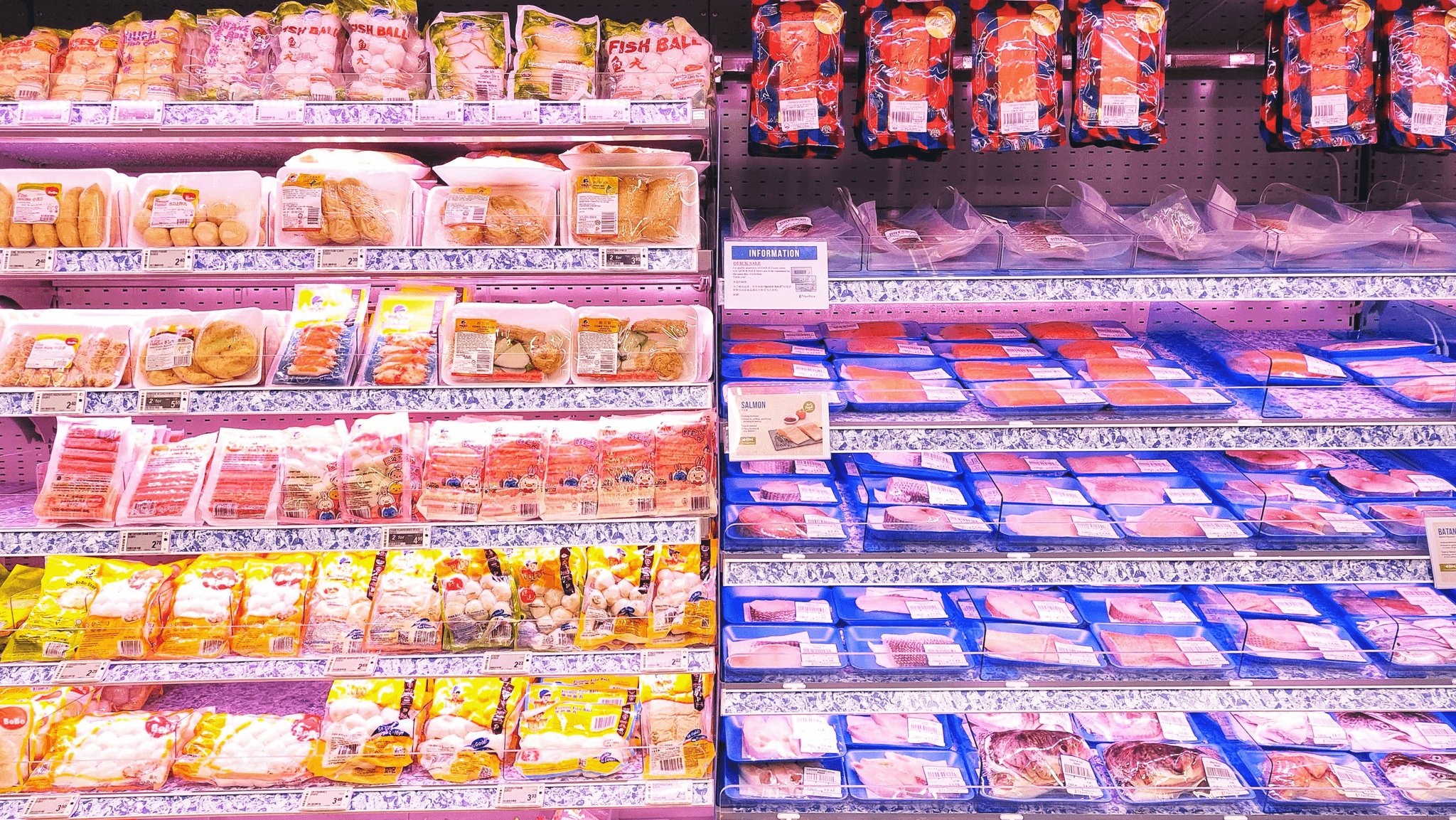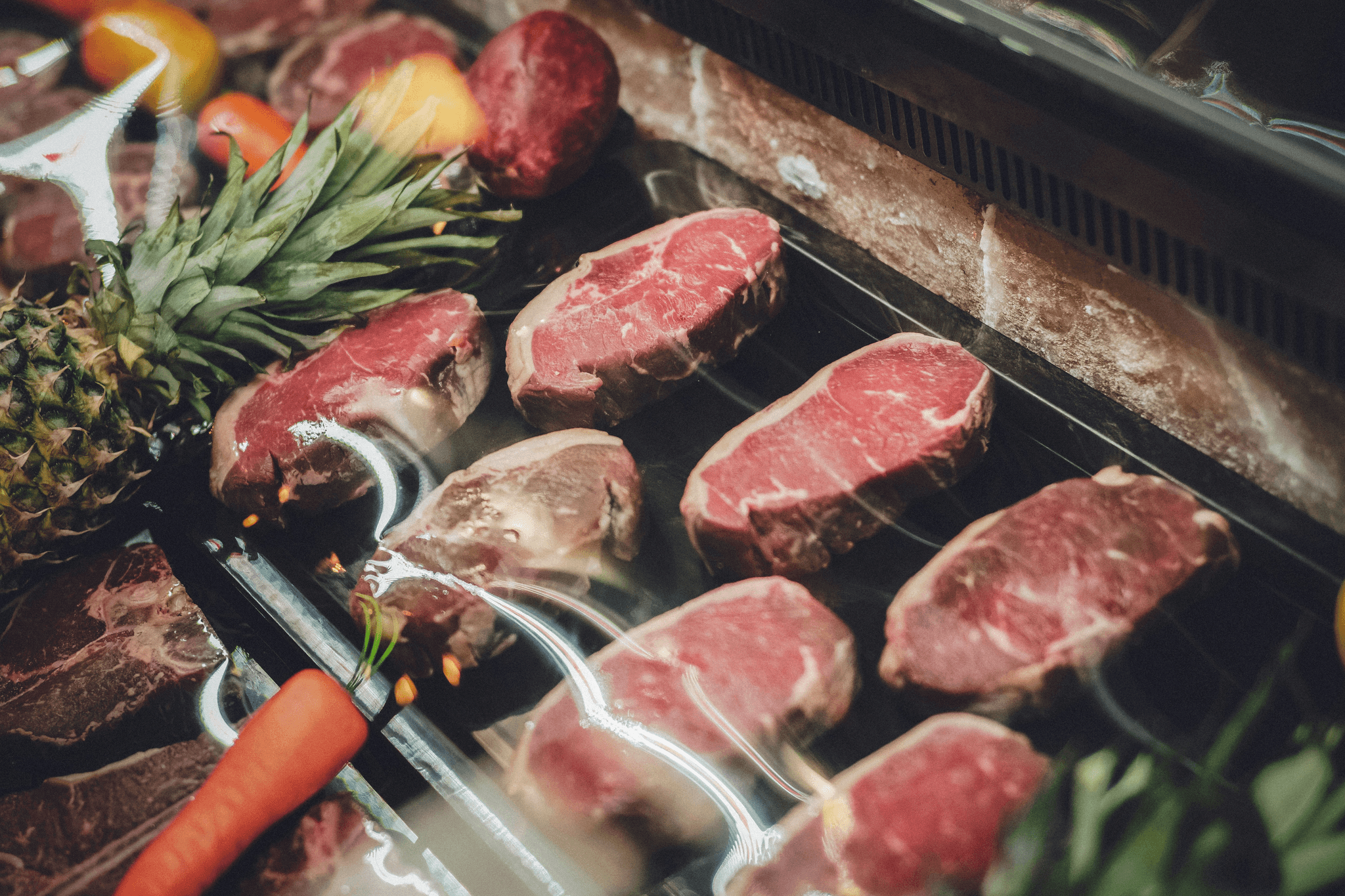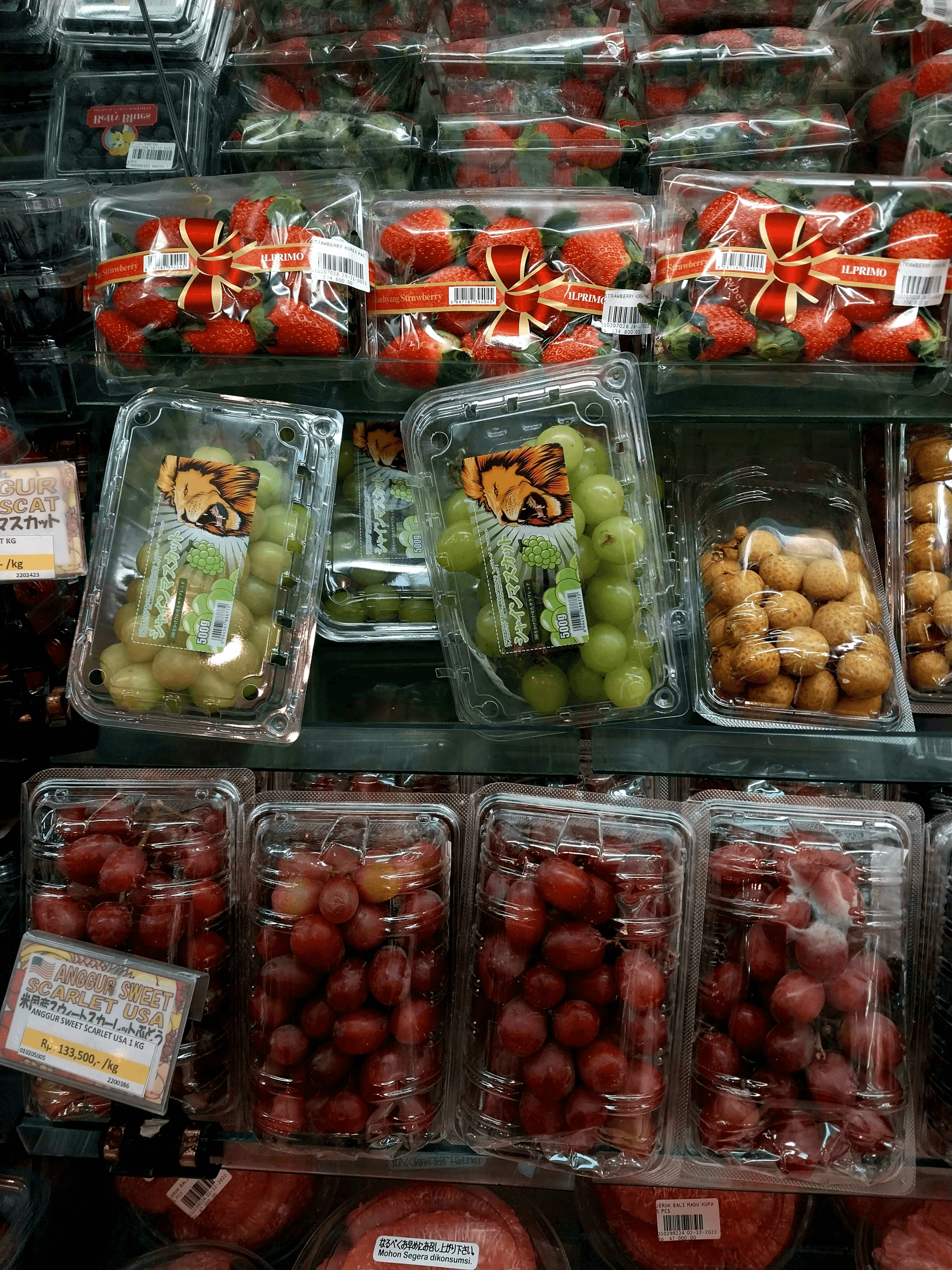Introduction

In the ever-evolving world of food packaging, meat display solutions have undergone significant transformation. From traditional plastic meat trays to innovative Foam Supermarket Meat & Processor Trays, the industry is embracing advancements that not only enhance product presentation but also prioritize sustainability. As consumers increasingly seek out eco-friendly options, the rise of customization trends has further shaped how butcher meat trays are designed and utilized.
Key Innovations in Meat Packaging
The landscape of meat packaging has seen a surge in creativity and technology, leading to more functional and appealing Meat Display Trays. Innovations such as biodegradable foam meat trays are paving the way for a greener future while still meeting consumer demands for safety and quality. These advancements not only cater to environmental concerns but also reflect a shift towards more personalized experiences with Foam meat tray sizes tailored to fit various cuts and portions.
Sustainable Choices for Meat Display
Sustainability is no longer just a buzzword; it's becoming an essential aspect of how we present food products, especially in the meat sector. With alternatives to plastic meat trays gaining traction, brands are opting for materials that minimize environmental impact while ensuring food safety. This commitment to eco-friendly practices is evident in case studies of sustainable brands that have successfully integrated biodegradable options into their packaging strategies.
The Rise of Customization Trends
Customization has become a powerful trend within the food industry, allowing businesses to create unique identities through their packaging choices, particularly with butcher meat trays. Tailoring foam meat tray sizes not only enhances brand recognition but also provides customers with a memorable shopping experience that stands out on crowded supermarket shelves. As consumers increasingly value personalization, brands that embrace these trends can foster deeper connections with their audience while driving sales through innovative design.
The Shift to Eco-Friendly Packaging

In recent years, the meat packaging industry has seen a significant shift towards eco-friendly solutions. Consumers are becoming increasingly aware of their environmental footprint, prompting brands to innovate beyond traditional plastic meat trays. This movement not only addresses sustainability but also enhances brand loyalty and customer satisfaction.
Biodegradable Foam Meat Trays
Biodegradable foam meat trays are leading the charge in sustainable packaging alternatives. These trays break down more efficiently than conventional plastic meat trays, reducing waste and environmental impact. Made from renewable resources, biodegradable foam meat trays offer a practical solution for supermarkets and processors looking to make greener choices without sacrificing quality or functionality.
The transition to biodegradable options does not mean compromising on performance; these foam supermarket meat & processor trays maintain durability while being environmentally friendly. As consumers become more discerning about their purchases, brands that adopt biodegradable solutions can significantly enhance their market position. By opting for these innovative foam meat tray sizes, businesses can appeal to eco-conscious shoppers seeking sustainable choices.
Alternatives to Plastic Meat Trays
With growing concerns over plastic pollution, many manufacturers are exploring alternatives to traditional plastic meat trays. Options such as plant-based materials and recycled paper products are gaining traction in the market as viable substitutes for conventional packaging methods. These alternatives not only reduce reliance on single-use plastics but also offer unique branding opportunities through eco-friendly messaging.
For instance, butcher meat trays made from compostable materials provide an attractive option for local shops aiming to differentiate themselves from larger retailers using standard plastic options. Moreover, food tray plastic disposable products are evolving; new technologies allow for enhanced safety features while maintaining sustainability goals. As more consumers demand transparency in sourcing and production methods, embracing these alternatives becomes essential for staying competitive.
Case Studies of Sustainable Brands
Several brands have successfully integrated eco-friendly practices into their operations by adopting sustainable packaging solutions like biodegradable foam meat trays and alternatives to plastic meat trays. One notable example is a regional butcher that replaced its traditional packaging with custom-designed butcher meat trays made from recyclable materials—resulting in a 30% reduction in waste generation within just one year! This commitment not only resonated with environmentally conscious customers but also boosted overall sales as word spread about their sustainable initiatives.
Another case study highlights a supermarket chain that implemented Foam Supermarket Meat & Processor Trays made from renewable resources across all its locations. The switch led to enhanced customer loyalty and positive media coverage about its commitment to sustainability—a win-win situation! These examples illustrate how integrating eco-friendly practices into product offerings can lead directly to improved brand reputation while addressing consumer demands for responsible consumption.
Customization and Branding in Meat Trays

In the world of meat packaging, customization is not just a trend; it’s a necessity. The right packaging can elevate a product’s appeal, making it stand out on supermarket shelves filled with plastic meat trays and foam supermarket meat & processor trays. With consumers increasingly seeking unique experiences, personalized butcher meat trays are becoming essential for brand differentiation.
Importance of Brand Identity
Brand identity plays a crucial role in how consumers perceive products, especially in the competitive meat market. A well-designed foam meat tray can communicate quality and freshness, creating an emotional connection with customers. This connection is vital because when shoppers see familiar branding on foam meat trays, they are more likely to trust and purchase those products over generic options.
Moreover, effective branding on meat display trays can also convey sustainability efforts if eco-friendly materials are used. Brands that highlight their commitment to reducing plastic waste through biodegradable options resonate well with environmentally conscious consumers. Ultimately, a strong brand identity not only encourages repeat purchases but also fosters customer loyalty in an increasingly crowded marketplace.
Success Stories from Butcher Meat Trays
Several butcher shops have successfully harnessed the power of customized packaging to boost their sales and customer engagement. For example, one local butcher began using foam meat trays adorned with their logo and vibrant graphics that showcased their farm-to-table ethos. This small change transformed the perception of their products from ordinary to premium, resulting in increased foot traffic and sales.
Another success story involves a specialty shop that created themed butcher meat trays for holidays and events—think BBQ packs for summer or festive roasts during winter holidays. By tailoring their offerings to specific occasions using appropriately sized foam meat tray sizes, they captured consumer interest and drove seasonal sales spikes like never before. These examples illustrate how customization not only enhances brand visibility but also aligns products with consumer preferences.
How to Use Foam Meat Tray Sizes Effectively
Understanding foam meat tray sizes is essential for maximizing both presentation and functionality in any retail setting. Offering various sizes allows businesses to cater to different customer needs—from single servings for individuals to larger family packs—ensuring that every shopper finds something suitable for them among the array of plastic meat trays available.
Additionally, strategic use of various sizes can enhance visual appeal when displayed together on shelves or counters; this creates an organized yet inviting look that attracts customers' attention. Retailers should consider pairing smaller foam supermarket meat & processor trays with larger options as part of promotional bundles or meal kits—this encourages upselling while providing convenience for busy shoppers looking for easy solutions.
To ensure consistency across all offerings, businesses should invest time into designing custom labels or branding elements that are cohesive across different tray sizes while still being informative about product details such as weight or origin—this elevates the overall shopping experience while reinforcing brand identity effectively.
Innovations in Tray Design and Functionality

The landscape of meat packaging is evolving rapidly, with innovations in tray design and functionality leading the charge. Modern meat display trays are not just containers; they're engineered solutions that enhance both product presentation and consumer convenience. From improved materials to integrated features, these trays are changing how we think about packaging in the food industry.
Features of Modern Meat Display Trays
Today's Foam Supermarket Meat & Processor Trays come equipped with various features aimed at improving usability and safety. Many incorporate moisture-absorbing pads that keep meat fresh longer by reducing excess liquid, which is a game-changer for retailers and consumers alike. Additionally, some butcher meat trays now include resealable options, making them more user-friendly for customers who want to store leftovers without hassle.
Consumer Preferences for Functional Packaging
When it comes to consumer preferences, functional packaging reigns supreme. Shoppers increasingly seek Foam meat tray sizes that suit their needs—whether they’re buying in bulk or just need a small portion for dinner. As sustainability becomes a priority, many consumers also favor plastic meat trays that are designed for easy recycling or composting, reflecting a growing trend towards eco-conscious purchasing habits.
The Role of Aesthetics in Food Presentation
The visual appeal of beautifully arranged meats on vibrant foam meat trays can significantly influence purchasing decisions at the supermarket or butcher shop. Well-designed packages not only catch the eye but also communicate quality and freshness—key factors that drive sales in an increasingly competitive market.
Food Safety and Hygiene Trends

In the ever-evolving world of meat packaging, food safety and hygiene are paramount. With consumers becoming increasingly aware of the importance of safe food handling, innovations in materials and practices have emerged to meet these demands. This section delves into advances in disposable food tray plastic, regulations impacting meat processing packaging, and best practices for ensuring safe meat packaging.
Advances in Disposable Food Tray Plastic
The development of disposable food tray plastic has taken significant strides to enhance both safety and sustainability. New formulations for plastic meat trays now incorporate antimicrobial properties that help inhibit the growth of harmful bacteria, providing an extra layer of protection for consumers. Additionally, Foam Supermarket Meat & Processor Trays are designed with improved sealing technology that minimizes contamination risks while extending shelf life.
As manufacturers innovate with these advanced plastics, they also focus on reducing environmental impact by incorporating recyclable or biodegradable materials into their designs. The introduction of Foam meat trays made from post-consumer recycled content is a prime example of this trend. Such advancements not only improve hygiene but also align with growing consumer preferences for eco-friendly options.
Ultimately, these advances in disposable food tray plastic are reshaping how we think about safety and sustainability in meat packaging. By prioritizing both aspects, manufacturers can meet consumer expectations while adhering to industry standards.
Regulations Impacting Meat Processing Packaging
Regulatory bodies worldwide are stepping up efforts to ensure that meat processing packaging adheres to strict safety guidelines. These regulations dictate everything from material composition to labeling requirements for products like butcher meat trays and foam meat trays used in supermarkets. Compliance with such regulations is essential not only for public health but also for maintaining brand integrity in a competitive market.
For instance, the USDA has established specific guidelines regarding the use of certain plastics in food contact applications, ensuring that they do not leach harmful substances into meats during storage or display. Furthermore, local health departments often conduct inspections focusing on proper sanitation practices related to foam meat tray sizes and overall hygiene during processing and retailing.
By staying informed about these regulations and implementing best practices accordingly, businesses can ensure their products remain safe while gaining consumer trust—an invaluable asset in today's marketplace.
Best Practices for Safe Meat Packaging
To maintain high standards of food safety within the industry, several best practices should be adopted when utilizing foam meat trays or other types of packaging solutions. First off, it’s crucial to ensure that all plastic meat trays are sourced from reputable suppliers who comply with regulatory standards regarding material safety and hygiene protocols during production processes.
Additionally, proper training for staff on handling raw meats is essential; this includes understanding cross-contamination risks associated with various foam supermarket meat & processor trays used throughout different stages—from preparation to display at retail locations. Regular cleaning schedules should be implemented as well as routine audits to identify any potential lapses in sanitary conditions surrounding the storage or display areas.
Lastly, educating consumers about safe handling practices when purchasing meats packaged in foam trays can further enhance overall food safety awareness within communities—creating a win-win situation for both businesses and customers alike!
Where to Buy Foam Meat Trays

Finding the right foam meat trays can be a challenge, especially with so many options available in the market. Whether you're a butcher, a supermarket manager, or just someone looking to elevate your meat display, knowing where to buy foam meat trays is essential. From top retailers to wholesale options, this section will help you navigate your choices effectively.
Top Retailers and Wholesale Options
When it comes to purchasing foam meat trays, several top retailers stand out for their quality and variety. Big-box stores often carry a range of plastic meat trays that cater to both personal and commercial needs. Additionally, local suppliers may offer specialized options like Foam Supermarket Meat & Processor Trays that are tailored for specific applications in butcher shops and grocery stores.
For those seeking bulk purchases, wholesale options provide an attractive solution for businesses looking to stock up on foam meat tray sizes that match their requirements. Many wholesalers also offer competitive pricing on large orders, making it easier for butchers and processors to manage costs while ensuring they have enough inventory on hand. Exploring these avenues will help you find the best deals without compromising on quality.
Unitedpakstore's Offerings
Unitedpakstore has emerged as a reliable source for all things related to food packaging, including foam meat trays that meet industry standards. Their selection includes various Foam Meat Tray sizes designed specifically for different types of meats and presentation styles. Whether you need butcher meat trays or more generic options for supermarkets, Unitedpakstore has got you covered.
Not only does Unitedpakstore offer competitive prices on their plastic disposable food trays, but they also emphasize sustainability in their products. This commitment makes them an excellent choice for businesses looking to adopt eco-friendly practices while still providing high-quality packaging solutions. With easy online ordering and prompt shipping services, finding the right foam meat trays has never been easier.
Comparing Prices and Quality
When shopping for foam meat trays, comparing prices and quality is crucial in making an informed decision. Different retailers may offer similar products at varying price points; thus it's essential to assess what features matter most—whether it's sturdiness or design aesthetics in your choice of Meat Display Trays.
While some might lean towards cheaper plastic meat trays initially, investing in higher-quality foam alternatives can save money over time by reducing waste due to breakage or leakage issues during transport and display processes. Additionally, reading customer reviews can provide insights into product performance across various brands before committing your hard-earned cash.
Conclusion

In the ever-evolving landscape of meat packaging, the future promises exciting innovations that prioritize sustainability while enhancing consumer experience. As brands explore new materials and designs, we can expect to see a significant shift away from traditional plastic meat trays toward more eco-friendly options like biodegradable foam meat trays. This transition not only meets consumer demand for greener products but also aligns with global sustainability goals.
Future Directions in Meat Packaging
The future of meat packaging is set to be defined by advancements that focus on functionality and environmental impact. Innovations in Foam Supermarket Meat & Processor Trays are paving the way for both efficiency and aesthetic appeal, ensuring that consumers receive high-quality products while minimizing their carbon footprint. With more companies investing in research and development, we can anticipate a wider variety of foam meat tray sizes tailored to specific needs, making it easier for retailers to showcase their offerings.
Embracing Sustainability in Food Industry
The food industry is increasingly recognizing the importance of sustainable practices, especially when it comes to packaging solutions like butcher meat trays. By adopting biodegradable alternatives and reducing reliance on plastic meat trays, businesses can significantly lessen their environmental impact while appealing to a conscientious customer base. As consumers continue to demand transparency and responsibility from brands, embracing sustainability will not only enhance brand loyalty but also drive sales.
Enhancing Customer Experience with Custom Packaging
Customization is becoming a key player in enhancing customer experience within the realm of meat display trays. Retailers are discovering that personalized packaging solutions not only make products stand out but also build stronger connections with consumers who appreciate unique branding efforts. By exploring various foam meat tray sizes and designs that reflect brand identity, businesses can create memorable shopping experiences that keep customers coming back for more.
